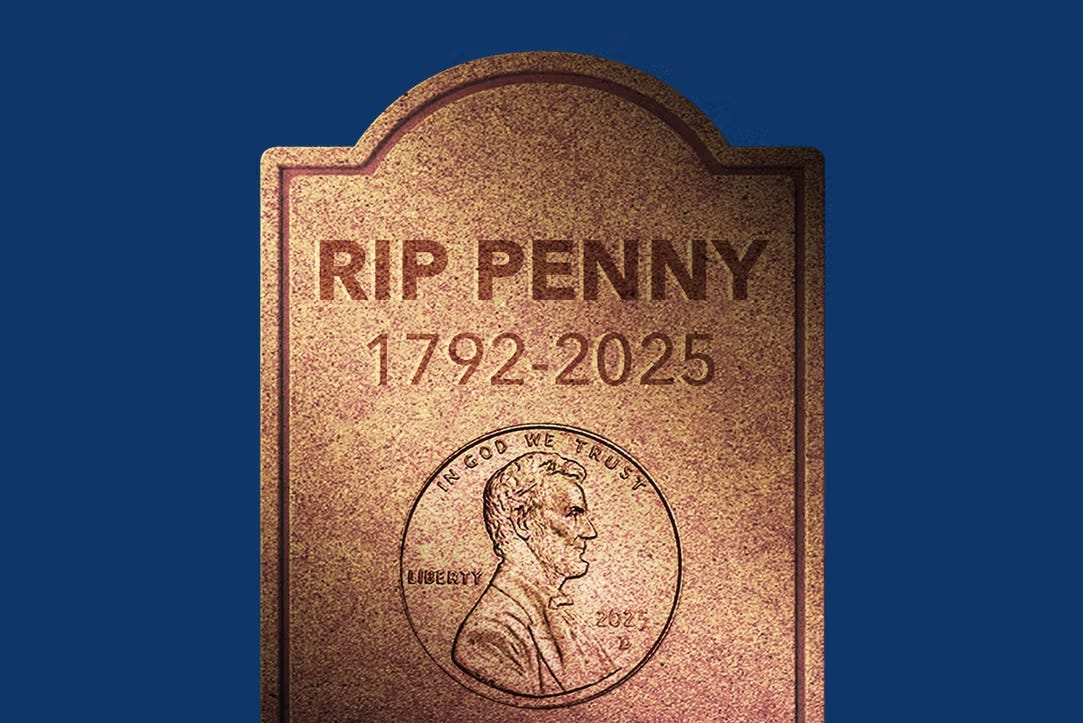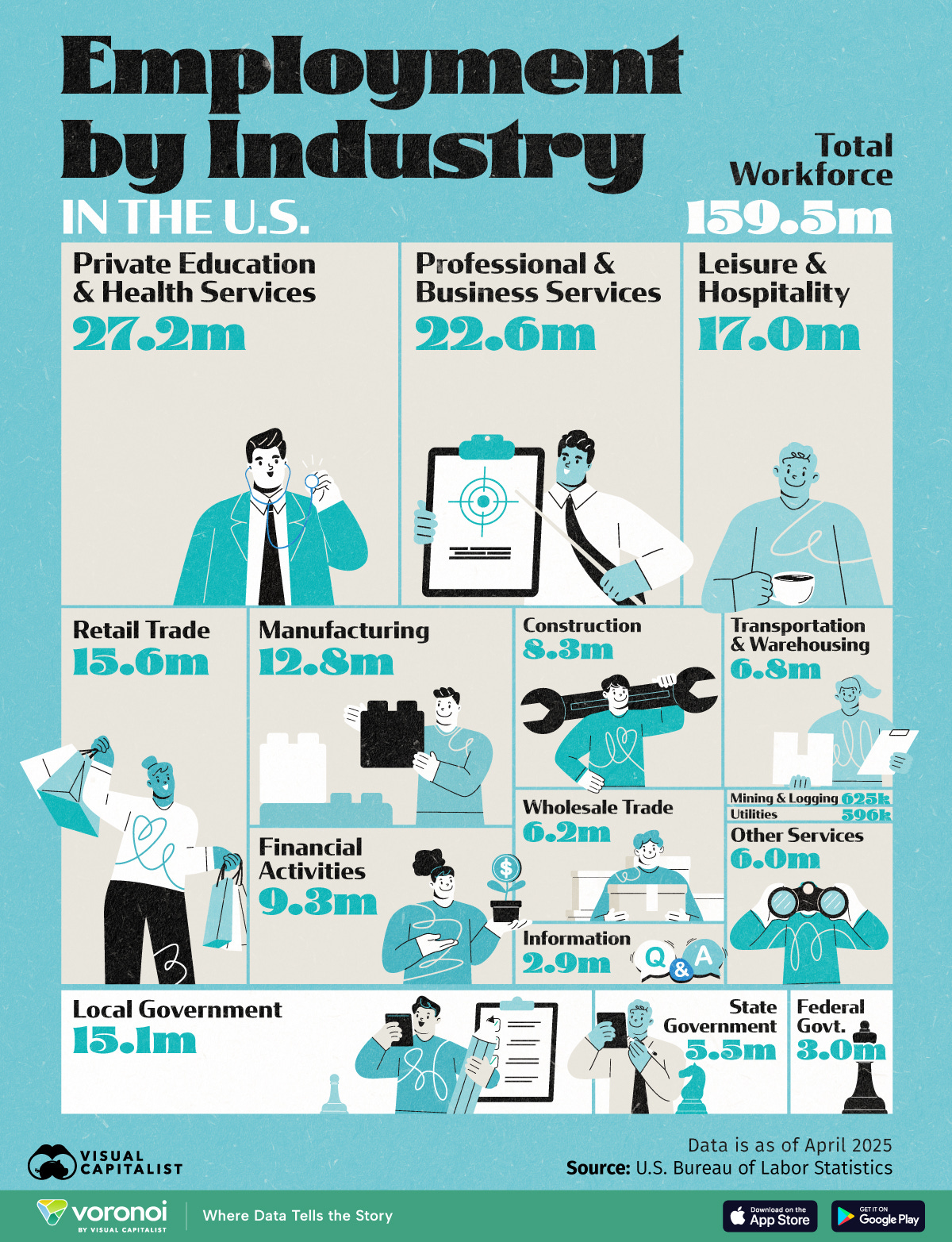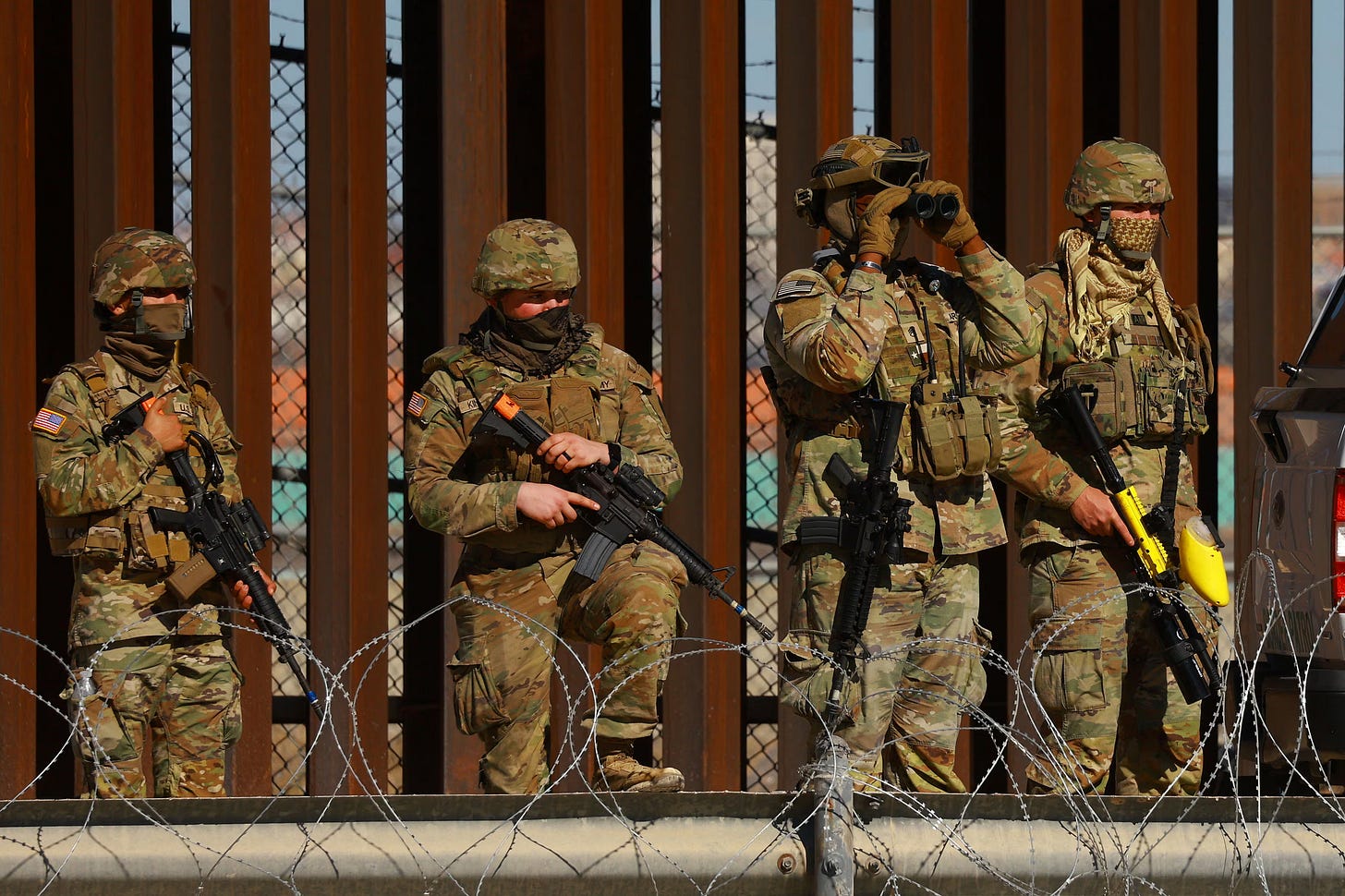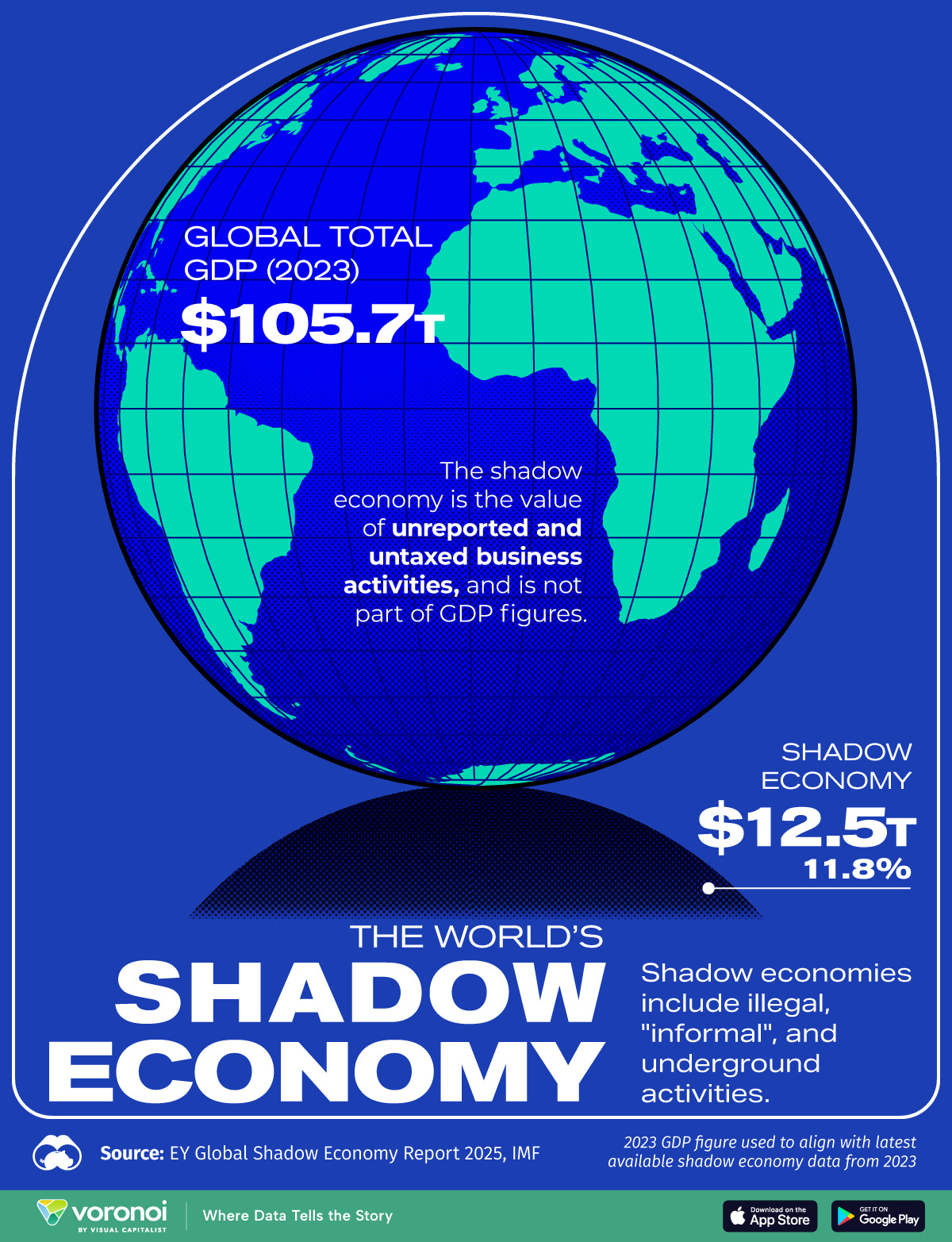This is a reader-supported publication. I give it all away for free but could really use your support if you want me to keep doing this.
1) With end of penny, change is no longer inevitable
AP: Stop making cents: US Mint moves forward with plans to kill the penny
What is amazing is not that we’ve finally decided to end the penny, not when so many of us no longer carry paper money — much less coins.
What is amazing is that the penny lasted this long, a feat that speaks to the stability of our economy over the centuries.
The penny has been in continuous production since the late 1700s. Its persistence through wars, depressions, and periods of rapid economic change signals a degree of monetary continuity and institutional stability that few countries can claim (really only the UK and Switzerland can boast of a longer monetary pedigree).
So, how has the US penny lasted so long?
The fact that the US dollar has been the world’s dominant currency since WWII has afforded the US a level of economic stability that allowed for small denominations like the penny to survive.
We’ve also never really suffered a period of hyperinflation — the sort of economic crisis that has killed small denominations in some economies (even eliminating coins outright).
The penny has likewise endured because it came to symbolize frugality: I myself used to proudly pick up pennies off the street as a rule — a habit I gave up only recently.
Having the penny allowed for greater precision in pricing, even as give-a-penny-take-a-penny bowls proliferated alongside cash registers and — in recent years — cashiers would routinely blow off either collecting or distributing pennies, thus forcing you the customer to ask for them and, by doing so, making you seem like some nut instead of some frugal person.
But the penny mostly endured because of cultural inertia: we Americans don’t like these kinds of changes.
Of course, the monetary unit known as the penny isn’t going away — just the coin. At four cents a penny, to produce a penny, it just no longer makes sense (the pun writes itself) to manifest it in physical form.
Like I said, I haven’t carried cash or coins on me for roughly a half-decade now. I have simply lost the habit even as I have always loved coins as these little works of art, having collected examples from all over the world — as they are my favorite souvenir from foreign lands.
Still, the penny going away feels bizarre to me, thus, I guess, my need for this entry in this week’s cutdown.
2) So much for the factory worker we keep hearing so much about
VISUAL CAPITALIST: U.S. Employment by Industry in 2025
The first think I noticed with this chart: the much-lamented manufacturing/ factory worker pool is but a mere eight percent of labor today. Listening to our elections, you’d figure it was half the economy. Such fetishizing of a single worker class seems odd in a modern economy, but I guess factory jobs are like the penny of our monetary system — a hard and historical habit to break.
The other thing I note and approve of: three-times as many local government workers than state workers, and — certainly now — twice as many state workers than federal ones. That implied pyramid distribution makes sense for a union of member-states. It represents the ballast of our political system: bottom-heavy and close-to-the-people versus top-heavy and distant-from-the-people. Ours is a horizontal governance system — despite the recent nationalization of all politics.
That is something to remember as we continue in our current feverish rejection of all government work as “evil” and “corrupt.”
3) Robbing Peter to pay Paul
MILITARY.COM: Pentagon Diverts $1 Billion from Army Barracks to Fund Border Mission
It’s an old Pentagon budgeting trick: get tasked with some unforeseen operation and end up paying for it by redirecting (“reprogramming”) funds from Installation & Maintenance accounts.
The Pentagon is shifting $1 billion meant for maintaining and renovating Army barracks to instead fund its surge of troops to the U.S.-Mexico border, a move that coincides with the service's gradual deprioritization of quality-of-life initiatives for soldiers.
In recent years, the US Army has sought to project a more responsive attitude to the care and feeding of military families. That changed immediately under Trump:
Current service leadership has moved away from that framework, scrubbing the Army’s mantra of “People First,” focusing more narrowly on traditional warfighting priorities such as weapon systems and acquisition reform.
Not particularly a Republican or Democratic sin. Just the same old, same old — despite all the “we’ve got your back” rhetoric from our I-am-one-of-you SECDEF.
4) Who watches the watchers?
STRAT NEWS GLOBAL: India’s Concerns Over Chinese Espionage Jolt Global Surveillance Industry
India’s government has the audacity to demand Chinese video surveillance firms hand over their tech for inspection.
Somebody’s been paying attention:
New Delhi’s approach is driven in part by its alarm about China‘s sophisticated surveillance capabilities, according to a top Indian official involved in policymaking. In 2021, Modi’s then-junior IT minister told parliament that 1 million cameras in government institutions were from Chinese companies, and there were vulnerabilities with video data transferred to servers abroad.
There are millions of CCTV cameras all over India, with 250k in the capital alone. So, yeah, when video data seems to be funneled to foreign servers, the local government might have a problem with that.
India estimates that 80% of all its CCTV components come from China, even though an Indian company owns the biggest share of the domestic market (almost half).
How much you wanna bet there are mysterious communication devices connected to these cameras just like with Chinese-produced solar power inverters?
5) Let that be your last battlefield
REUTERS: India and Pakistan's drone battles mark new arms race
Recent performative strikes between India and Pakistan feature — for the first time — large-scale use of drones.
This is presented as a “new arms race” when it is really the last arms race, because, once you go unmanned, you don’t go back.
Sure, civilians will still get killed, but, with any luck, nobody in uniform need be sacrificed in these performative “battles.” In its most idealized form, nobody at all gets hurt. Instead, it’s just a matter of your drones attriting, and being attrited by, your opponent’s drones — at a winning rate, of course, as battles must still be “won.”
Otherwise, where is the valor?
6) Bothering with some Al-Qaeda franchise operating in some shithole country? I got better things to do!
WAPO: How U.S. cuts in Somalia could imperil the fight against al-Shabab
Al-Shabab has been hanging out in Somalia for years, just like its parent company once did in mountains of Afghanistan. I mean, it’s not like they’re going to pull off some Pearl Harbor-like attack. That kind of crazy-ass shit only happens in movies.
One of al-Qaeda’s best-funded and most lethal global affiliates, al-Shabab has retaken important towns from Somali forces over the past three months. Its fighters previously launched an assault on a U.S. airfield in Kenya and plotted attacks on the U.S. mainland.
Easy to blow off … until one day it comes back to haunt you.
During his first term, Trump ordered the U.S. military to leave Somalia and “commute to work” from neighboring countries, a strategy soldiers said was time-consuming and dangerous. Although U.S. troops are back, Washington has withdrawn support for Somali special forces and is reconsidering plans to deploy hundreds of American soldiers across the country. Most foreign trainers pulled out after cuts to security assistance, and morale among local troops is said to be waning. All the while, tensions between U.S. officials and Somali authorities appear to be nearing a boil.
“I sat down with people from the White House, and they asked: ‘What if we just let [Somalia] burn? Can we contain it?’” said a former senior State Department official. “I said ‘No!’”
There were plenty of such pre-9/11 inter-agency debates regarding Al-Qaeda and Afghanistan, always entertaining and typically settling on that let-em-burn option.
I mean, how bad could it get? It’s not like they’re going to attack us?
What always amuses me: if you talk about dealing with such threats at the source, then you’re labeled some war-mongering neocon who fantasizes about nation-building across the world. Better to axe all that crap and just have State focus on pushing US companies abroad. Why? Because all that economics will be sufficient to ward off the security stuff, am I right?
But then, once the shooting starts or the bomb goes off, you’re subsequently labeled some naive idealist who thought trade would obviate wars, so, either way, you’re a dangerous idiot.
America doesn’t like to deal with chronic problems. We like to swoop in, kill the bad guys, and leave pronto — Powell Doctrine, drop-mike style. The ultimate of that genre was the night we killed bin Laden in Pakistan.
We finally won!
That narrow attitude of ours is China’s most prized strategic asset as it spreads it influence and surveillance networks around the world.
7) All aboard the brain train. Destination? ABUSA!
ECONOMIST: Demand for American degrees has already hit covid-era lows
Today we hear that SECSTATE is going to aggressively root out Chinese students at US universities. Proof negative? Family ties to the Chinese Communist Party.
This is EXACTLY the grand-strategic stuff that makes for historic SECSTATES, so … go man go!
For a long time, the Chinese contingent was the biggest, befitting its rise to superpower-dom. Lately, Indians overtook the Chinese in numbers, also befitting its rise to superpower-dom.
But here’s the thing: three-quarters of them, on average, stay here to work. That’s an immense brain capture that we’re now driving off in the name of America Last.
As The Economist notes:
Blocking the next generation of students may punish the Ivies. Over time, though, it is America’s edge in science, business and innovation that will suffer.
That is called cutting off your head to spite your nose — as in, unfuckingbelievable!
8) Out of the frying pan and into the fire
ECONOMIST: If India chokes less, it will fry more; Pollution may have shielded it from the worst of global warming. That will change
Give ’em a brake!
Turns out all that pollution may have spared India a lot of extreme heat up to now, so, as the country naturally decreases that pollution as it develops (Environmental Kuznets Curve), it may actually soak up more heat — the previous heavy pollution blocking a certain amount of solar radiation.
Damned if you and damned if you don’t.
Another possible, less-conflicted explanation of India’s slower heat increase in recent years: its aggressive expansion of irrigation across the rural sector.
Still, a conundrum:
In the coming decades neither pollution nor irrigation will continue to grow in the way they have over the past 40 years. Both conceal additional warming only as long as their levels are increasing. If pollution and irrigation remain stable, South Asia will feel the full effects of any new global warming. If they decrease, the region will feel the effect of the rising temperatures from the past few decades that these factors were masking.
India remains my canary in the coal mine regarding radical adaptation to climate change: they either show the way to Africa or the globalization show stops here.
9) Trump as Freddy Krueger
ECONOMIST: In Germany, the Nazis invaded people’s dreams
The historical analogy:
The Third Reich of Dreams. By Charlotte Beradt. Translated by Damion Searls. Princeton University Press; 152 pages; $24.95 and £20
In 1933, after Adolf Hitler had taken power, a German housewife dreamed that her stove was snooping on her. “It said everything we’d said against the regime, every joke we’d told” to an eavesdropping stormtrooper. “God, I thought, what is it going to say next? All my little comments about Goebbels?” The woman’s fears about privacy and Hitler’s chief propagandist were recorded by Charlotte Beradt, a Jewish journalist who collected the dreams of Germans under fascism.
Three decades earlier Sigmund Freud had posited that dreams reveal unconscious thoughts. To Beradt, they disclosed truths about authoritarianism that no one would dare say aloud. Some of her subjects were nervous to share their stories. Half a dozen dreamed that it was forbidden to dream. A businessman imagined that Goebbels visited his factory. “It took me half an hour to get my arm raised, millimetre by millimetre,” he recounted. As he struggled to salute, his spine snapped.
Today, in our VR world, it feels more like we’re living inside Trump’s dream.
ATLANTIC: Americans Are Living in Trump’s Dream; That is what the American experience is beginning to feel like in 2025.
The point from a prominent TV show runner:
In Ursula Le Guin’s novel The Lathe of Heaven, George Orr wakes to discover that he has the power to control reality through his dreams. Each night while he sleeps, the world changes in profound and unexpected ways. In the morning, Orr alone remembers reality as it was. Soon, Orr (named, one would assume, for George Orwell) finds himself under the care of a psychiatrist, who, realizing that Orr has these powers, tries to use them to turn the world into a utopia. This does not go well for the world.
It doesn’t go well because dreams have their own logic. They are nonlinear and to some degree nonsensical, and so directing oneself to dream of world peace may result in an alien invasion. Technically the dream has been fulfilled. Earthlings have stopped fighting with one another, but only because all of Earth is now ruled by an alien species. In this new dream reality, a world ruled by aliens becomes the only world you have ever known.
That is what the American experience is beginning to feel like in 2025: Not as if we are living in President Donald Trump’s reality, but as if we are living in his dream.
Now I lay me down to sleep … unsure of what to pray for.
But this is what Project 2025 sought: making us all too scared to dream on our own, so busy have we become processing their daily nightmares.
10) Hyper-what-now-you-say?
GUARDIAN: Systems are crumbling – but daily life continues. The dissonance is real
Cognitive dissonance by day gets your nightmares by night.
First articulated in 2005 by scholar Alexei Yurchak to describe the civilian experience in Soviet Russia, hypernormalization describes life in a society where two main things are happening.
The first is people seeing that governing systems and institutions are broken. And the second is that, for reasons including a lack of effective leadership and an inability to imagine how to disrupt the status quo, people carry on with their lives as normal despite systemic dysfunction – give or take a heavy load of fear, dread, denial and dissociation.
There there, feel better?
But it begs the question: At what point does pretending this is all normal become untenable? When do we achieve clash consciousness?
11) Buyer’s remorse
ECONOMIST: How young voters helped to put Trump in the White House; And why millennials and Gen Zers are already leaving the president
The harsh truth:
Gen Z and millennial voters preferred Mr Biden by 19 points in 2020.
Had these two cohorts voted as they did in 2020, Ms Harris would have won the popular vote by 2.8 points, rather than losing it narrowly to Mr Trump. And though turnout fell by around two points nationwide, it fell by double that among 18- to 29-year-olds.
Now, those same ranks are turning on Trump very quickly.
Research by Columbia University found that events in voters’ early adulthood have an outsize effect on their long-term partisanship. Older millennials aged into the electorate against the backdrop of the financial crisis and Occupy Wall Street. But for the youngest voters formative political events have been more diverse and disruptive. They have come of age during covid-19 lockdowns, cost-of-living shocks and the rise of and backlash against wokeness. How they will make ideological sense of the whiplash is difficult to predict.
A whiplashed generation, indeed.
12) It’s getting better all the time
VISUAL CAPITALIST: The World’s Shadow Economy
First impression for me? I’m surprised how small the percentage is.
Turns out my reaction is accurate, per Visual Capitalist:
While measuring the informal economy is hard to quantify, it has shrunk from 17.7% of world GDP in 2000 to 11.8% in 2023.
Connectivity creates transparency and transparency reduces fraud and other subterranean behavior.
Imagine what distributed ledgers in general and blockchain in particular might further accomplish.



















